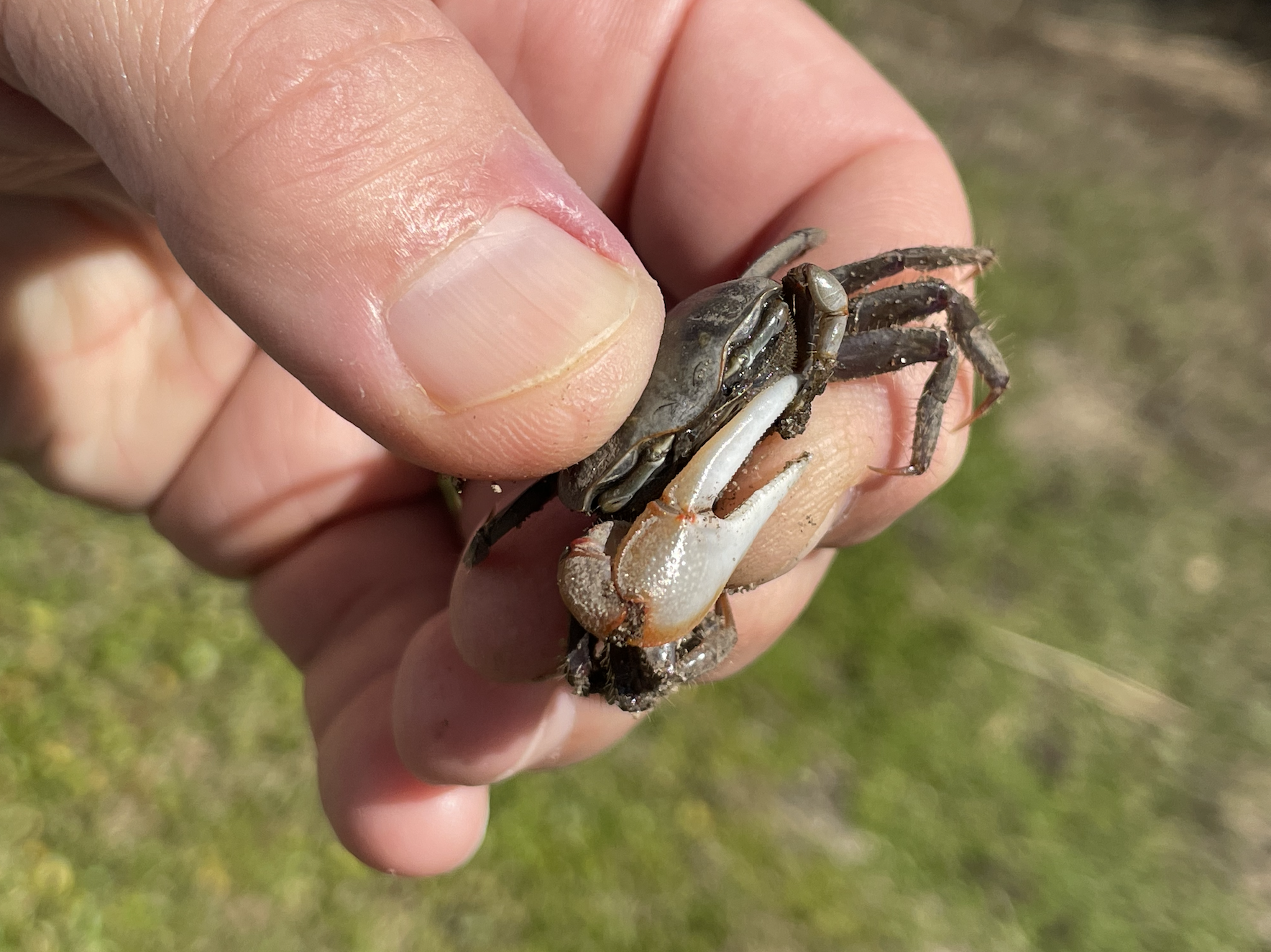
One of the biggest themes interweaving this week’s competition bespoke anglers exiting shallow creeks and cuts in the Winyah Bay marsh grass before a falling tide drained the area.
That principal’s pretty clear: You don’t want to get trapped and end up stuck in the infamous pluff mud’s relentless grip. Two teams experienced this frustration on Day 1 and, to say the least, it was not fun.
So why do anglers risk fishing in or near the marsh? Simple: to find redfish.
And why do redfish push into the marsh? To find food. The buffet includes small baitfish, invertebrates, snails and and interesting crustacean known as the fiddler crab.
According to the South Carolina Department of Natural Resources, multiple fiddler crab species inhabit the Southeastern Atlantic coast, but the mud fiddlers (Uca pugnax) is the one you’ll see most commonly around Winyah Bay marshes.

With a brown shell (carapace) and long bluish eyestalks, mud fiddlers are sexually dimorphic, meaning the males and females have different appearances. Specifically, males have one smaller claw and one oversized claw (cheliped), while females have two equally sized claws.
The male’s cheliped is mostly held laterally across the front, similar to a violin, or fiddle — hence, the name. As the SCDNR describes, a mature male’s cheliped can reach 65% of its body weight.
(A similar species, the square back marsh crab, aka “wharf crab,” resembles a female fiddler, with two small claws. The main difference: marsh crabs have shorter eyes stalks located at the front corners of their shells, while a fiddler’s longer eye stalks are centered at the front of the shell.)
Excavation projects: While most of the stuff a redfish eats remains below the water’s surface, low tides often provide a terrestrial look. With gills and lungs, fiddlers can survive in and out of the water, but they’re never far from their burrows.
When receding tides lay marsh edges bare, you’ll see fiddlers foraging across the muddy bottom. When spooked, they’ll duck into their deep, winding burrows.
When higher tides allow redfish to enter marsh grass fields, they’ll tip their heads down to try and root fiddlers out of their burrows. At the right water level, a red’s back end breaks the surface as the fish balances itself. This is what anglers refer to as “tailing reds.”
From shore, a stealthy approach may allow you to sneak into photo range of foraging fiddlers. Find an area with a bunch of nickel to quarter sized holes skirted with piles of tightly packed mud balls and you can bet there’s a bunch of irritated fiddlers waiting for you to leave.
If you can stand still for a few minutes, the crabs’ appetites will force them out of their burrows. They’ll tolerate human audiences, as long as you keep your distance and minimize the movements.

Show Offs: Male fiddler crabs occasionally use their giant claws to settle territorial disputes, either through intimidation or the marsh version or arm wrestling. Mostly, the big guns are meant for impressing the girls.
Lots of waving and warning gives the marsh banks an entertaining animation, but you can usually spot the beach bosses, as the juniors wisely allow them wide berths.
Despite the formidable appearance, the male fiddler’s huge claw is actually the end of one of its 10 legs, so there’s not much power in the pincher. If you’re quick enough to catch one of the males, grip it from behind and gently tuck the big claw against the body.
A good pinch is nothing pleasant, but you won’t lose a chunk of your finger.
Word to the wise: Do no test that theory with the larger, stronger, and ill-tempered blue crab. You’ll experience a much different interaction.





